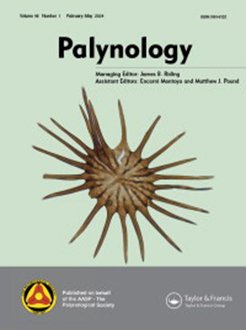Plebeia mansita is a native stingless bee endemic to the Yungas whose populations are distributed in sectors above 1000 m a.s.l. Its honeys and other products are used by local residents for various purposes, from food to medicinal uses. With the purpose of understanding the botanical resources that contribute nectar and nesting to this species of bee in the town of Baritú (22°28′54.1″S, 64°45′39.4″W; at 1546 m a.s.l.), we analyzed 41 honey samples collected between September 2011 and September 2015 and recorded the main host trees. The samples were examined by palynological techniques using acetolysis, revealing the use of pollen types belonging to native plants, mainly of arboreal habit. Pollen richness per sample varied from 13 to 31 pollen types (mean = 22.7), where the family Asteraceae had the highest number of pollen types (n= 9) and nectar relevance, followed by Myrtaceae. Relevant pollen types correspond to Blepharocalyx salicifolius, Ilex argentina, Myrcianthes pseudomato and Allophylus edulis, followed by Sambucus peruviana, Parapiptadenia excelsa, Handroanthus lapacho, Myrsine coriacea and Zanthoxylum. Other recorded pollen types, with importance index values below 3.5% were Eupatorium, Dendrophorbium bomanii, Senecio, Pseudognaphalium and pollen of the families Asteraceae and Rhamnaceae. On the other hand, when evaluating nesting substrates we recorded the frequency of use of trunks of Ilex argentina as 55.9%, Parapiptadenia excelsa 10.3%, Myrcianthes pungens 7.4%, M. pseudomato 5.9%, Juglans australis 4.4%, Handroanthus lapacho 2.9%, and Blepharocalyx salicifolius, Myrsine coriacea, Ocotea porphyria, Viburnum seemenii, Myrcianthes mato, Roupala montana var. brasiliensis and Erithrina falcata with a value of 1.5% each. The results obtained provide valuable information on the plants that provide nectar and nesting sites for this stingless bee. This information should be considered for the preparation of conservation or production plans for their hives and pollination activities.
How to translate text using browser tools
7 February 2024
Outstanding Botanical Resources for Plebeia mansita (Apidae, Meliponini) in the Northern Argentine Yungas: Botanical Characterization of Its Honey and Main Nesting Substrates
Fabio Fernando Flores,
Liliana Concepción Lupo,
Norma Inés Hilgert
ACCESS THE FULL ARTICLE
It is not available for individual sale.
This article is only available to subscribers.
It is not available for individual sale.
It is not available for individual sale.

Palynology
Vol. 48 • No. 1
February–May 2024
Vol. 48 • No. 1
February–May 2024
melissopalynology
melliferous flora
nesting
stingless bees





